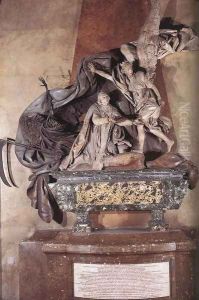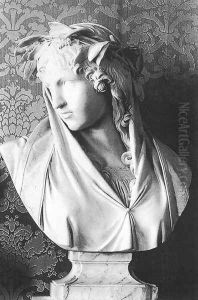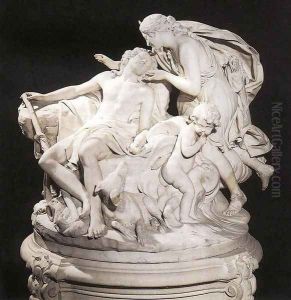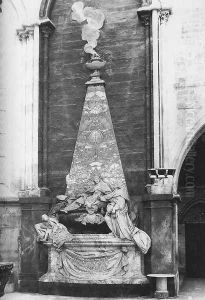Rene-Michel Slodtz Paintings
René-Michel Slodtz, also known as Michel-Ange Slodtz, was a French sculptor born in Paris on October 1705. He hailed from a family of artists of Flemish origin; his father, Sébastien Slodtz, and his two brothers, Paul-Ambroise and Sébastien-Antoine, were also recognized sculptors. René-Michel trained under his father and developed a talent for sculpture from a young age.
In 1729, Slodtz won the prestigious Prix de Rome, an award that granted him the opportunity to study at the French Academy in Rome. His time in Italy had a profound impact on his style, and he became an important figure in the development of French neoclassical sculpture. During his Roman sojourn, Slodtz was influenced by the works of classical antiquity and the Renaissance, especially by the works of Michelangelo, which is reflected in his robust, expressive style and his preference for dramatic compositions.
Upon his return to France, Slodtz was received into the Académie Royale de Peinture et de Sculpture in 1744, and he became one of the leading sculptors in Paris. His works often showed a remarkable blend of French elegance and Italian grandeur. René-Michel was primarily known for his funerary sculpture and decorative work for royal commissions. One of his most notable works is the mausoleum of Cardinal Fleury in the church of Saint-Germain-des-Prés in Paris, which he undertook with his brother Paul-Ambroise.
Slodtz continued to receive important commissions throughout his career, including works for Versailles and other royal sites. His sculptures are characterized by their dynamic movement, dramatic use of drapery, and emotional intensity. Despite the fact that his works are not as widely recognized today as those of some of his contemporaries, Slodtz was an influential figure in his time, and his art played a significant role in the transition from the Baroque to the Neoclassical style in French sculpture.
René-Michel Slodtz died in Paris in June 1764. His legacy is preserved in his sculptures that remain on display in various museums and institutions, and through the continued study and appreciation of French eighteenth-century art.





